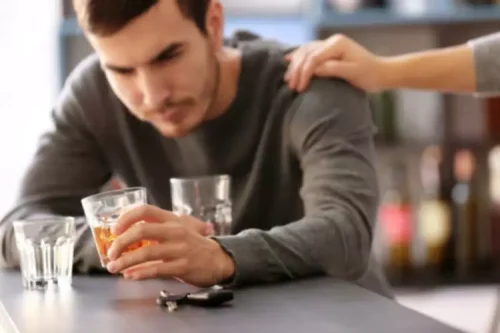
The processes of neural plasticity and neural toxicity that deeply entrench the behaviors of substance use in the brain can make those behaviors difficult to change. Nevertheless, data bear out that most people who meet the clinical criteria for an alcohol or other drug use disorder achieve full recovery. In fact, the latest figures from the National Survey on Drug Use and Health indicate that among those who had an alcohol or drug problem, the remission rate is approximately 75 percent. A common criticism of the notion that addiction is a brain disease is that it is reductionist and in the end therefore deterministic 81, 82. As indicated above, viewing addiction as a brain disease simply states that neurobiology is an undeniable component of addiction. A reason for deterministic interpretations may be that modern neuroscience emphasizes an understanding of proximal causality within research designs (e.g., whether an observed link between biological processes is mediated by a specific mechanism).
Benton and Franklin Counties combine additional $11M boost to recovery center
There has been almost no new investment in stopping or delaying drug use in the first place—the most cost-effective way to reduce the number of new people entering pathways leading to overdose and death. We must reduce stigma to get folks into treatment and ensure they aren’t ostracized. Inadvertently, we stopped raising the alarm about the dangers of drugs when what we need to do is stigmatize the drugs themselves.
Evoking calm: Practicing mindfulness in daily life helps

Cravings are the intense desire for alcohol or drugs given formidable force by neural circuitry honed over time into single-minded pursuit of the outsize neurochemical reward such substances deliver. Cravings vary in duration and intensity, and they are typically triggered by people, places, paraphernalia, and passing thoughts in some way related to previous drug use. But cravings don’t last forever, and they tend to lessen in intensity over time. For many of those who are addicted, enduring even that action is unimaginable. What must follow is the process of behavior change, through which the brain gradually rewires and renews itself. In the face of addiction, the journey toward recovery can feel overwhelming and isolating.

A systematic review and meta-analysis on the transcriptomic signatures in alcohol use disorder
The Diagnostic and Statistical Manual of Mental Disorders (DSM) avoids the terms addiction and recovery. Sustained remission is applied when, after 12 months or more, a substance is no longer used and no longer produces negative life consequences. Only 1.0 percent of people receive substance abuse treatment as an sober living blog inpatient or outpatient at a specialty facility. The single most popular path is the use of peer support groups in the community. In this study, antecedents are those events that should have occurred before recovery (36), which is divided into 2 categories.
How climate change may affect addiction recovery
Women for Sobriety focuses on the needs of women with any type of substance use problem. Sustaining behavior change until new patterns become ingrained is difficult under the best of circumstances. In leaving addiction behind, most people have to restructure their everyday life, from what they think about and who they spend time with and where, https://ecosoberhouse.com/ to how they use their time, to developing and pursuing new goals. The shifts in thinking and behavior are critical because they lay the groundwork for changes in brain circuity that gradually help restore self-control and restore the capacity to respond to normal rewards.

Free Healthbeat Signup
- Sponsors explain how the program works, serve as a confidant, and, in the case of 12-step support groups, help the individual complete the 12 steps of recovery.
- An alumni program is a network of people who completed their full scope of inpatient or residential treatment from a treatment center.
- The transition between emotional and mental relapse is not arbitrary, but the natural consequence of prolonged, poor self-care.
- The critical role of alternative reinforcers was elegantly brought into modern neuroscience by Ahmed et al., who showed that rats extensively trained to self-administer cocaine would readily forego the drug if offered a sweet solution as an alternative 103.
Because of this, neurobiology is a critical level of analysis for understanding addiction, although certainly not the only one. It is recognized throughout modern medicine that a host of biological and non-biological factors give rise to disease; understanding the biological pathophysiology is critical for understanding etiology and informing treatment. However, a heritability of addiction of ~50% indicates that DNA sequence variation accounts for 50% of the risk for this condition. Once whole genome sequencing is readily available, it is likely that it will be possible to identify most of that DNA variation.
View Options
- Treatment enables people to counteract addiction’s disruptive effects on their brain and behavior and regain control of their lives.
- Those rewards are often compelling, so the substance or behavior remains appealing even if it also comes at a cost.
- If there is a hitch in this picture of addiction it is that it is far from simple.
- It relies on the fact that most cravings dissipate within 10 to 15 minutes and that waiting it out (or better, getting busy with something else) will result in a happier 15-minutes-from-now experience rather than a capitulation.
- Clinical experience has shown that common causes of relapse in this stage are poor self-care and not going to self-help groups.
All these definitions revolve around abstinence but they are not deemed as the equivalent of recovery. “The most likely truth about addiction is that it’s not a single, basic mechanism, but several problems we label ‘addiction,'” says Michael F. Cataldo, Ph.D., chief of behavioral psychology at Johns Hopkins Medical Institutes. The most popular “theory,” however, is that addictive behaviors are diseases. In this view, an addict, like a cancer patient or a diabetic, either has it or does not have it. Popularized by Alcoholics Anonymous, the disease theory holds that addictions are irreversible, constitutional, and altogether abnormal and that the only appropriate treatment is total avoidance of the alcohol or other substance, lifelong abstinence, and constant vigilance. When a person receives treatment in an inpatient or residential treatment facility, discussions with a counselor about aftercare options typically occur before the client leaves.
An Artist And A Scientist Take On The Stigma Of Addiction
“We know this is the case with animals we can train to do something, even if they never get a positive reward out of it,” Cataldo says. The “reward” is escape from or absence of an electric shock or punishment, even if it’s only occasional escape or unpredictable escape. The cocaine addict may be addicted to the pursuit of cocaine and stealing to get money to buy the drug; using coke may be secondary to the reward of not getting caught and the “high” of pursuing the drug life-style.
Studies show that those who detour back to substance use are responding to drug-related cues in their surroundings—perhaps seeing a hypodermic needle or a whiskey bottle or a person or a place where they once obtained or used drugs. Such triggers are especially potent in the first 90 days of recovery, when most relapse occurs, before the brain has had time to relearn to respond to other rewards and rewire itself to do so. Learning what one’s triggers are and acquiring an array of techniques for dealing with them should be essential components of any recovery program. Although addiction tends to cut people off from longtime friends, social support is a significant predictor of recovery. They may know something about the person’s deepest aspirations and voice them as a reminder that can help the person remain on the road to recovery.